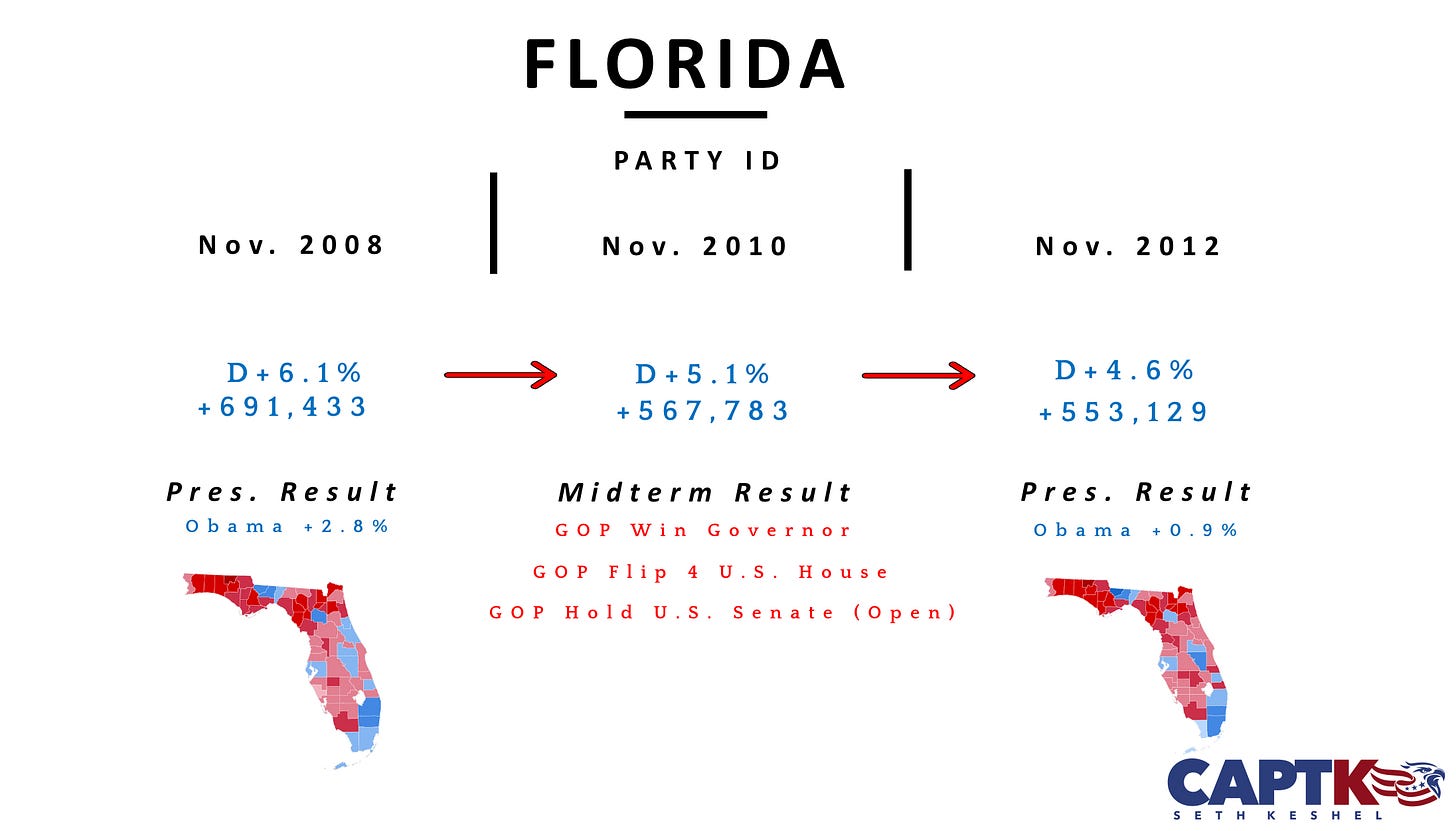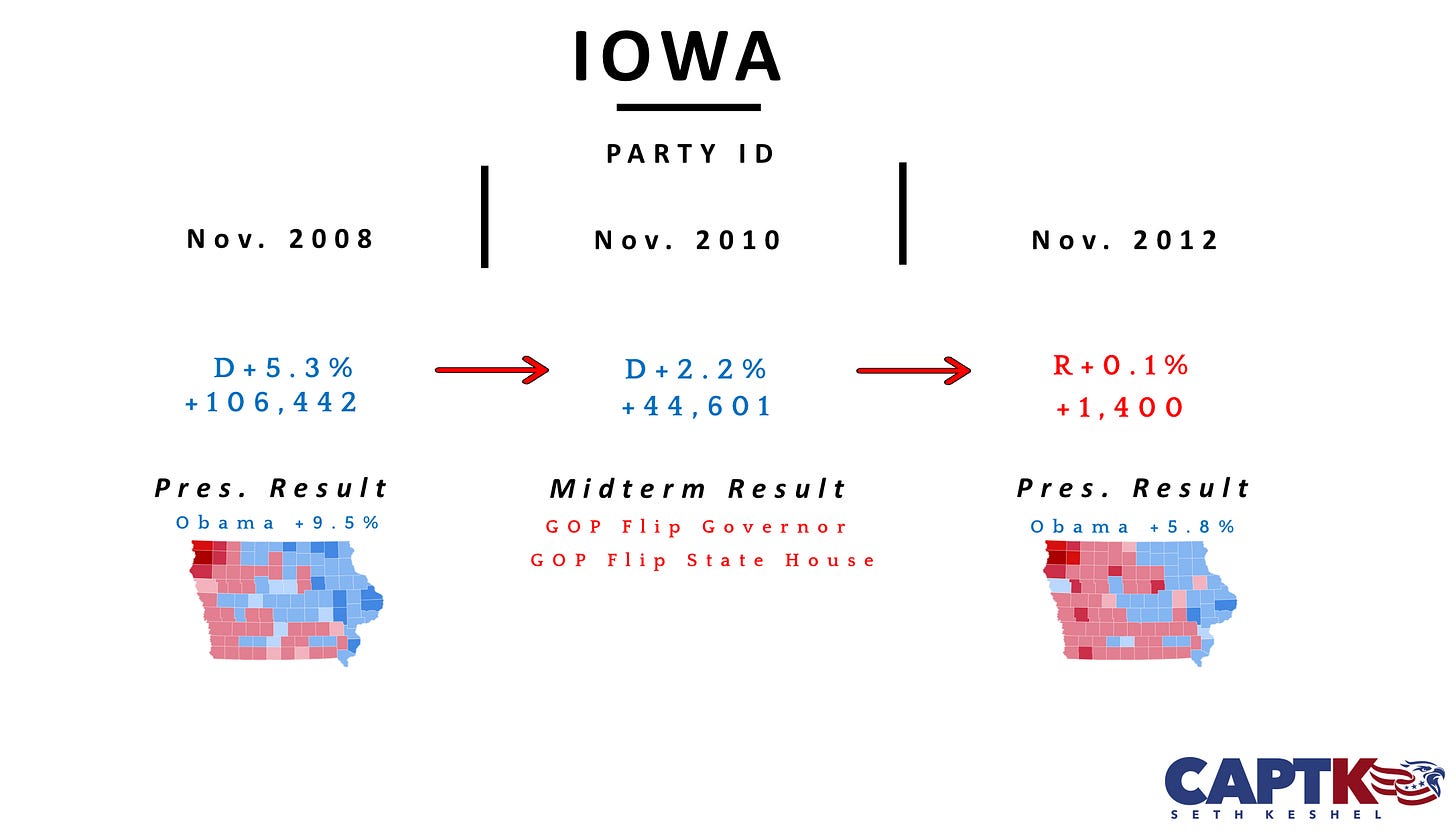How To Tell When the President is Truly Unpopular
History has already given us everything we need to know - so why follow mainstream pollsters paid to lie?
I’ve mentioned repeatedly that there are few pollsters who can be trusted. Richard Baris, Robert Cahaly of Trafalgar Group, and Mark Mitchell of Rasmussen Reports are three of very few remaining that are worth even a few seconds your time. I struggle sometimes to reconcile the fact that I have to deliver the goods several times per week with laser-like accuracy just to stay in business, while slop pollsters can tell you Gavin Newsom is on his way to winning the presidency by a larger margin than Barack Obama did in 2008, even as every state becomes more Republican by party registration.
It is a sickening thing, but apparently big media and political propagandists have plenty of cash to blow through. This is why you see the rigged presidential approval polls showing Trump with 2008-esque polls we saw attached to George Dubya. Here are three recent such results:
9/22 Economist/YouGov -12% (43 Approve/55 Disapprove)
9/21 Reuters/Ipsos -17% (41 Approve/58 Disapprove)
9/21 Quinnipiac -16% (38 Approve/54 Disapprove)
Remember, this isn’t a rah-rah newsletter. I told you who was going to win the Wisconsin Supreme Court race, I’ve told you what an uphill battle the Virginia statewide races are this fall, and will always prize accuracy over clicks. I can also tell you where the president is popular and not so popular (as will the voter registration data, which don’t lie in presidential races and still have impact on midterms).
The three polls above stand in contrast to two other pollsters, the aforementioned Rasmussen Reports and RMG Research, who regularly peg Trump far above these ridiculous low percentages. Rasmussen shows Trump at +2% today (50 Approve/48 Disapprove), and RMG Research had him above water last week by a point. My point in highlighting this contrast is not to value the ones I like more than the ones I don’t like; it is to point out that both sets can’t be simultaneously correct. One group is wrong, lying their asses off, and the other is closer to the mark.
So, how do we know who to value? It’s a simple exercise and it involves flipping back through the pages of history to look at old voter registration by party shifts. Presidential approval is always subject to fluctuation, and anything approaching 50% is dangerous to the party out of power because even a percentage of disapproves will be voting for the President or the President’s party in the next election. Historical Gallup research suggests President Obama hovered just below 50% for most of his first term, and while he was still well above water at this point in his presidency, by the time of the 2010 midterms, he was in negative territory. This reflected itself in the voter registration statistics leading into the 2010 Tea Party wave, and carrying on to the 2012 presidential election.
This exercise uses the same seven battlegrounds I use every month to dial in the voter registration by party picture. Please familiarize yourself with this month’s updates before proceeding:
MEMORY LANE
FLORIDA
How Florida shifted during Obama’s first term:
Florida had already moved 133,650 registrations rightward by the time the 2010 midterms rolled around, and the GOP flipped 4 U.S. House seats, got Rick Scott into the Governor’s Mansion, and won the U.S. Senate (Rubio) race when the state was still one of tightest battlegrounds.
Registrations continued to drift rightward, resulting in Romney nearly flipping the state. Florida’s love of incumbent presidents (none voted against since 1980) is all that saved Obama.
Florida is now over 200,000 net registrations redder from the time of Trump’s landslide win last fall, and next month, I’ll be posting about yet another huge GOP pickup brewing this month.
IOWA
Moderate Iowa started sprinting rightward during Obama’s first term, with enough change (+61,841) present by 2010 midterms to flip the Governor’s Mansion and the State House. The Iowa legislature would prove crucial in the 2010s in passing strong election laws and turning the state into the red state it is today.
By 2012, registrations had flipped Republican, and while Obama still held Iowa, Romney was 3.7% stronger. Trump pushed the state nearly 15 points to the right in 2016.
Today, Iowa is more than 20,000 registrations redder than it was when Trump sent Ann Selzer into early retirement.
PENNSYLVANIA





